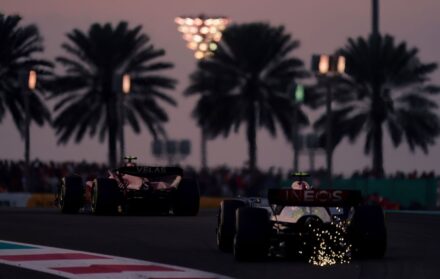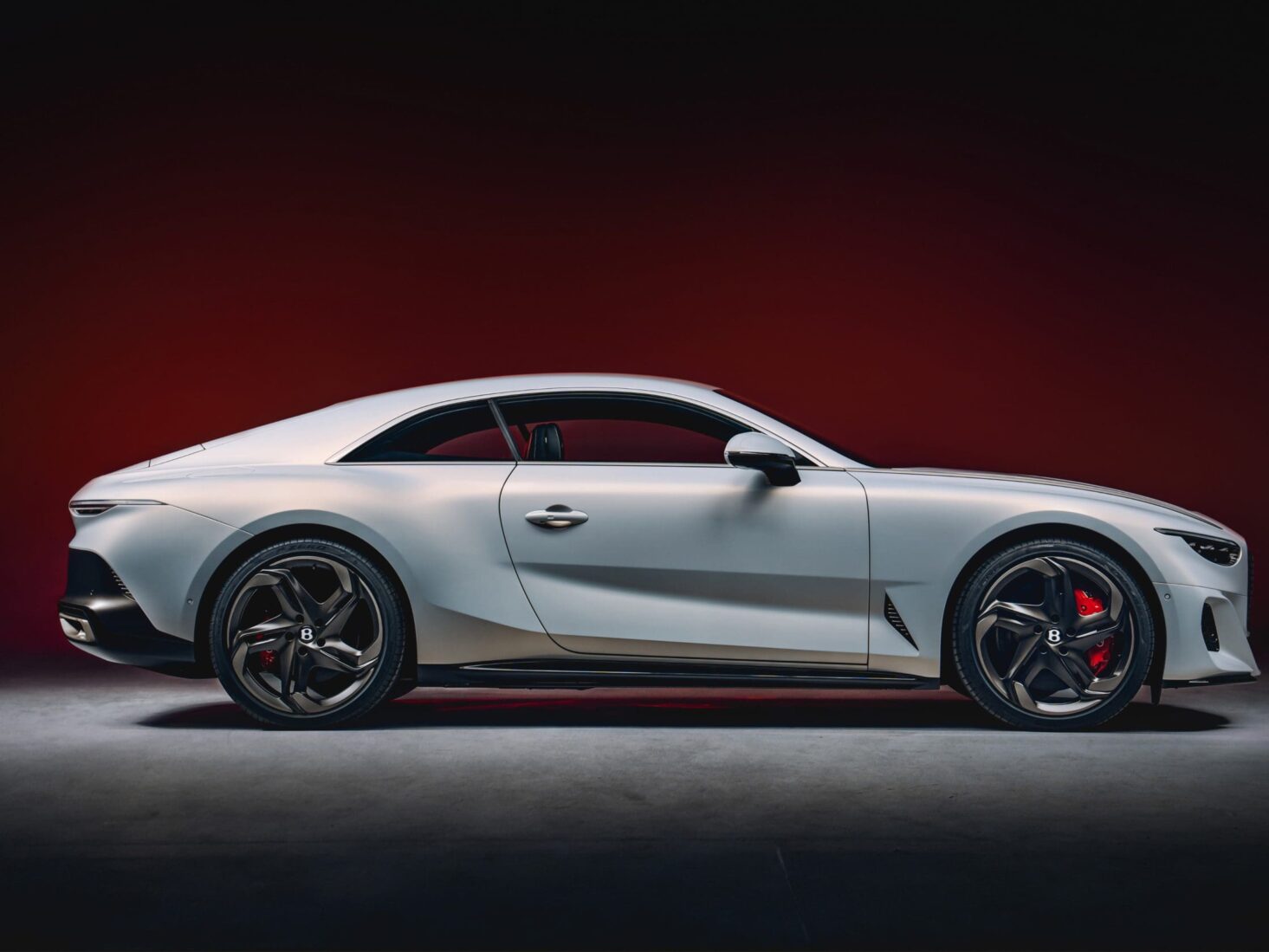
Bentley Batur: The carmaker’s most powerful machine points towards an all-electric future
Bentley pulls the covers off its latest coachbuilt car from Mulliner, providing a glimpse of what the marque's all-electric cars might look like in the future
When Bentley pulled the covers off the coachbuilt Barchetta-style Baclar back in 2020, it represented more than just another limited-run, super-exclusive grand cruiser. It signalled the British carmaker’s return to its coachbuilding roots – the art of lovingly handcrafting car bodies, just like they did in the good ol’ days. Mulliner – a legendary coachbuilding name owned by Bentley, that dates back as far as the 1700s – was revived and rebooted to take up the mantle of producing these automotive artworks and now it’s time for its highly-anticipated second album. Enter the Batur.
Like the Baclar, the Batur is named after a natural body of water – Lake Batur, in this case, on the island of Bali, Indonesia. In the same way that its topless predecessor represented more than just another exclusive, hand-built car, the Batur has been given the duty of showcasing the new design direction for Bentley’s all-electric age. Giving us the first glimpse of the design language that will shape the marque’s first fully-electric car in 2025, the Batur is a bold statement that shows how Bentley isn’t prepared to sacrifice its ‘unapologetic’ aesthetic as it heads electric. Designed under the stewardship of Bentley’s new Director of Design, Andreas Mindt, the former Audi designer focused on what he believes are the three main Bentley design elements and reinterpreted them into a new, cleaner form.
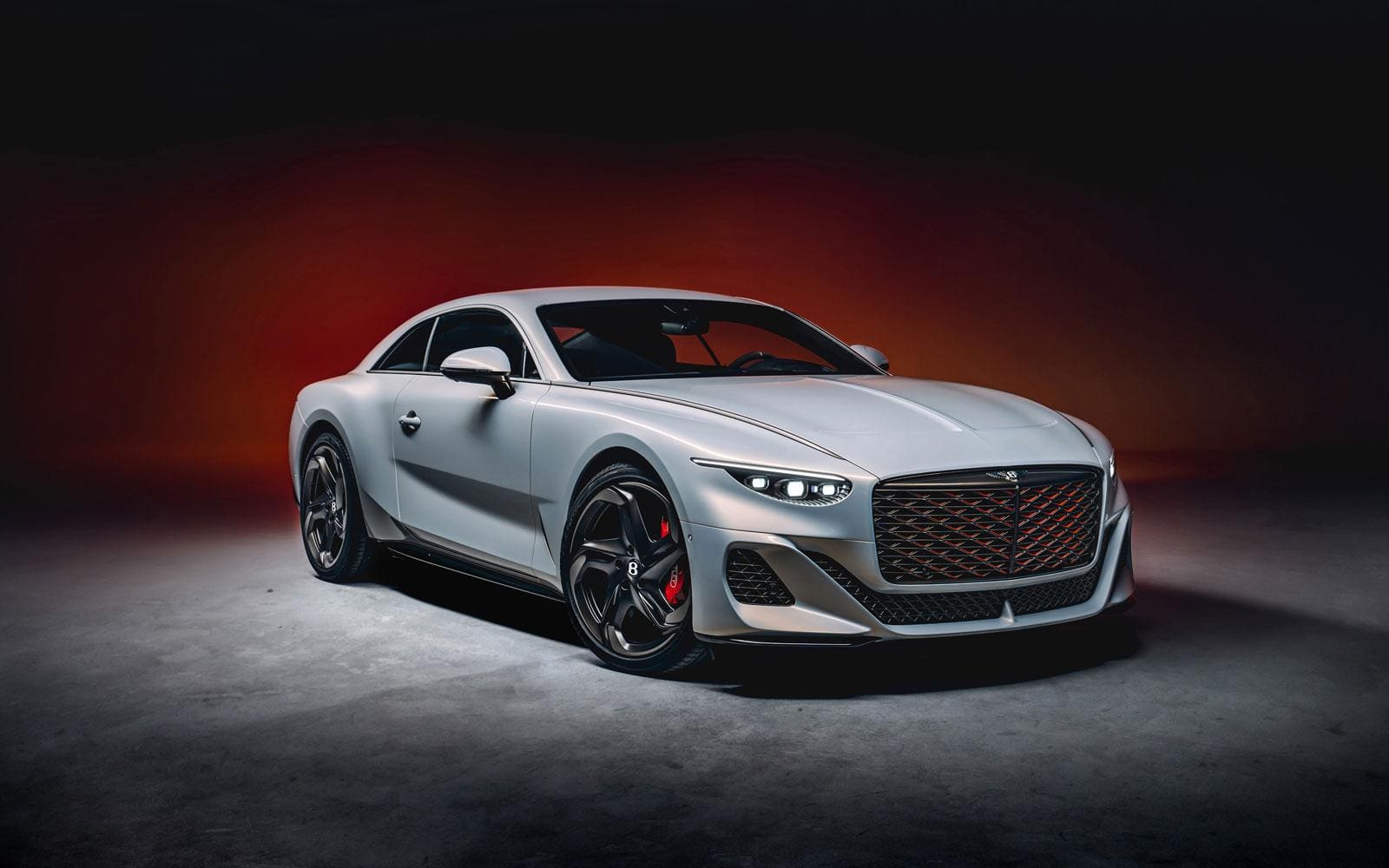
“The first element is the ‘resting beast stance,’ which comes from our DNA, says Mindt, gesturing towards the Batur’s rear haunches at its global reveal at Monterey Car Week in California. “It’s not an attacking beast, it has a relaxed and calm but powerful attitude – it’s sitting on its rear wheel.
“Feature number two is the endless bonnet line, which comes from our past, only this is our latest take on it. The line connects the bonnet and the body but it’s not just a line – it’s a whole architecture. The front fender is far out and then we push it far in [in the mid-section] to give way for this resting beast stance. The shape is really important for us. It’s really reduced and it’s the essence of what Bentley should be.
“Then there is the upright elegance. It’s self-confident, it’s not leaning back – it’s really strong and looking straight onto the street. But when you look at the front, it’s not just the radiator, it’s the front light as well – everything is upright. It’s not apologetic. These are the three important elements for us. It’s purified, it’s simple but it’s progressive at the same time.”
Launched amid the hustle and bustle of Monterey Car Week, the Batur attracted the attention of some of the most affluent car collectors in the world. Yet Bentley wasn’t there looking for buyers. Each of the 18 Baturs that will roll off the production line is already accounted for. With prices starting from £1.65m, excluding taxes and options, Bentley is confident no two Batur’s will look the same thanks to the level of personalisation available.
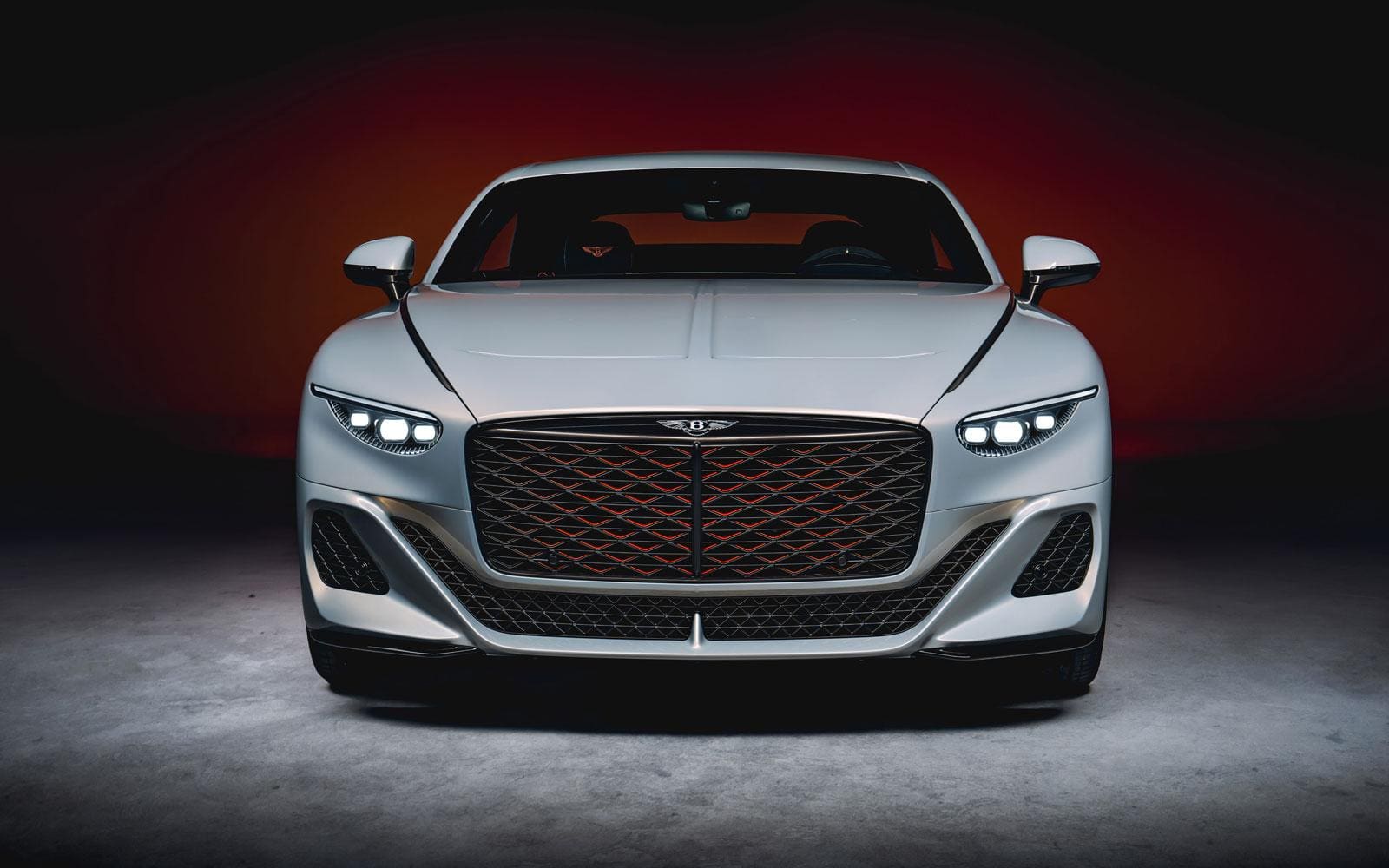
True to the art of coachbuilding, the Batur takes the idea of bespoke craftsmanship to a whole new level. Those lucky enough to step foot in Mulliner’s design consultation lounges and spec a Batur can choose between low-carbon leather, sourced from Scotland; Dinamica, an alternative suede-like sustainable material; Natural Fibre composite, a sustainable alternative to carbon fibre; carpets made from recycled yarn; and 3D-printed 18K gold touches in the cabin.
“We’ve learnt a lot of things by doing cars like the Bacalar,” says Paul Williams, Director of Mulliner and Motorsport at Bentely. “We learnt about the things that we can do on these low-volume cars that you can’t do on a mainstream car, so we’ve started to push those boundaries a little bit more.
“With this car, we’ve done things like 3D-printed gold in the interior and 3D-printed titanium, so we’re looking at different ways of using materials that we can only do in really unique and special cars like this.”
Despite showing the way for Bentley’s all-electric age, the Batur sports the latest version of the marque’s rip-roaring 6.0-litre W12 engine, marking one of the last blasts for the beast that’s powered cars from Crewe for the past two decades. Producing more than 740hp, however, the Batur is the first of Bentley’s new coachbuilt cars to receive a performance tweak.
“For the first time in a Mulliner car, we’ve taken the step to play a little bit with the engine performance, so what you see here for the first time is a performance increase above the standard top-end of what we produce today,” says Williams.
“This car is not just a demonstration of what we can do with coachbuilding – it’s also a demonstration of the breadth of what we can do as Bentley and what we can do for really special, low-volume cars like Batur.”
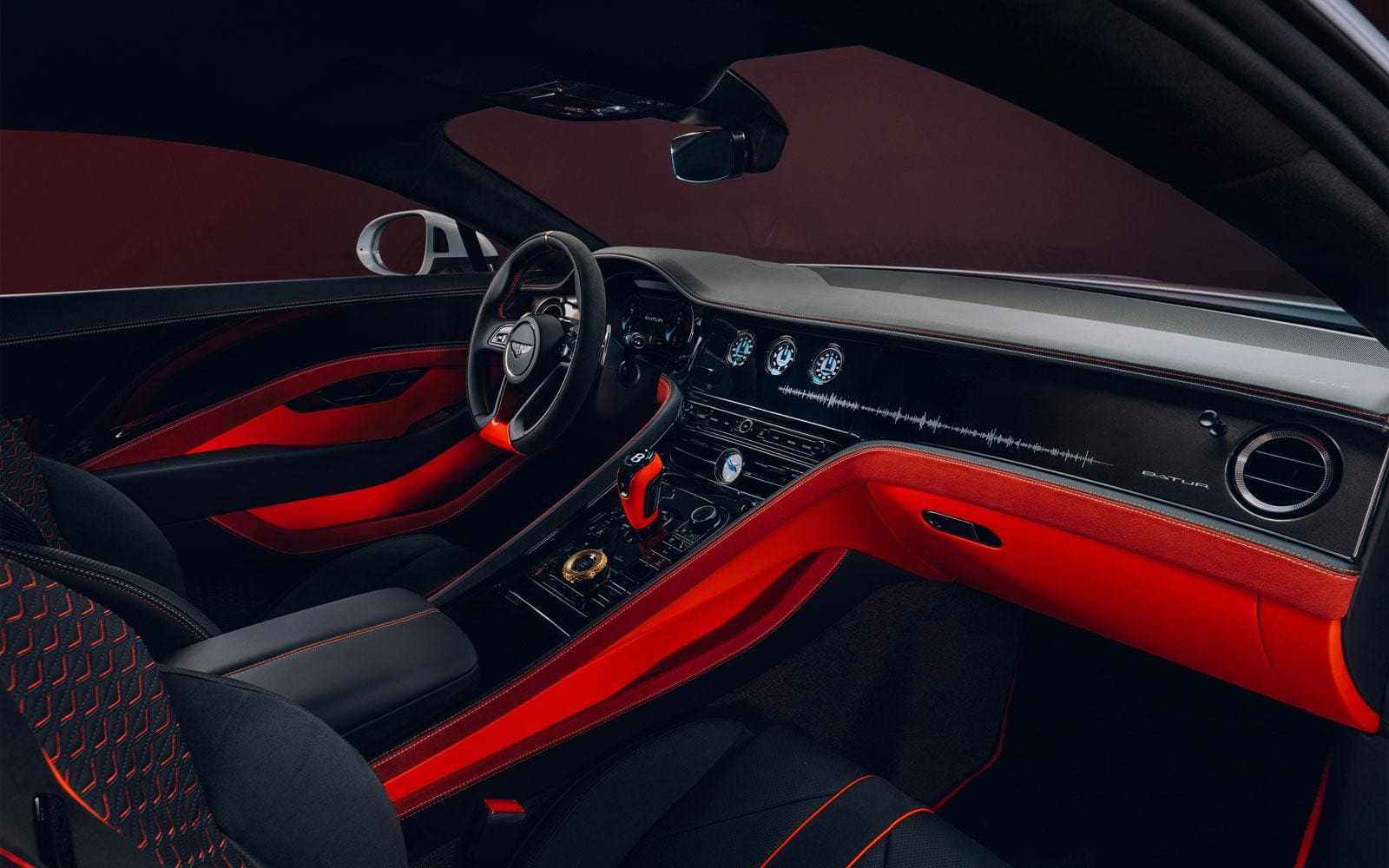

While the Batur might be a super-exclusive – not to mention expensive – styling exercise, it heralds something much more important for the car industry – a return to coachbuilding. As more carmakers turn to smaller electric powertrains with fewer components, the design constraints associated with traditional combustion-engine cars fall away, opening the floor to new, innovative designs and creativity. Walk for five minutes around the Concours lawn at California’s Pebble Beach and it’s clear to see that the cars that leave a lasting legacy are those that are carefully sketched, styled and handcrafted.
“One of the things we do with Mulliner is to try and show future design language, so we used this opportunity to show what a future Bentley is going to look like,” says Williams. “This is how we see the future of Bentley.”
While the Batur and Bentley’s new design direction might divide opinion, the Crewe-based carmaker’s commitment to revitalising coachbuilding is something to be applauded. In an age of mass production and increasingly short product lifecycles, a coachbuilt car like the Batur – designed and built by human hands – is surely the greatest luxury of them all.
Read more: On board J Class Rainbow, the world’s first superyacht




